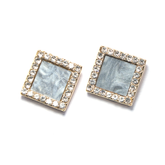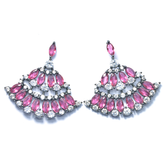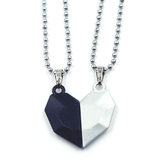The Art of Jewellery Making: Crafting Beauty from Precious Metals
Jewellery making is an ancient craft that has captivated cultures around the world for millennia. From the earliest civilizations to modern-day artisans, the art of creating Jewellery from precious metals has evolved into a multifaceted form of expression, blending tradition with innovation. In this blog, we delve into the intricate world of Jewellery making, exploring the techniques, materials, and creativity that go into crafting exquisite pieces of wearable art.
The History of Jewellery Making:
Jewellery making is not merely a craft; it's a window into the soul of human civilization. Since time immemorial, humans have adorned themselves with ornaments, imbuing these pieces with cultural significance, symbolic meaning, and artistic expression. The journey of Jewellery making begins in the mists of prehistory, where our ancestors fashioned primitive ornaments from shells, bones, and stones.
In the Paleolithic era, early humans adorned themselves with simple yet striking Jewellery, carving intricate designs into bone pendants or stringing together shells to create necklaces. These adornments served not only as decorative accessories but also as symbols of status, tribal affiliation, and spiritual beliefs. As societies evolved and settled into agricultural communities, so too did the art of Jewellery making, with artisans experimenting with new materials and techniques.
The dawn of civilization brought with it the rise of metallurgy, a pivotal moment in the history of Jewellery making. In ancient Mesopotamia, Egypt, and Greece, skilled craftsmen began working with precious metals like gold and silver, transforming them into exquisite ornaments fit for royalty and nobility. Elaborate crowns, intricate amulets, and finely crafted earrings adorned the elite, symbolizing wealth, power, and divine favor.
|
Time Period |
Notable Jewellery Styles |
|
Ancient Egypt |
Scarab amulets, gold necklaces |
|
Ancient Greece |
Laurel wreath crowns, cameos |
|
Roman Empire |
Fibulae brooches, intaglio rings |
|
Renaissance |
Enamel pendants, gemstone rings |
|
Victorian Era |
Mourning Jewellery, lockets |
|
Art Nouveau |
Nature-inspired designs |
|
Art Deco |
Geometric shapes, platinum |
|
Modern Era |
Minimalist, customizable pieces |
Jewellery Making Through the Ages:
Jewellery making is not merely a craft; it's a window into the soul of human civilization. Since time immemorial, humans have adorned themselves with ornaments, imbuing these pieces with cultural significance, symbolic meaning, and artistic expression. The journey of Jewellery making begins in the mists of prehistory, where our ancestors fashioned primitive ornaments from shells, bones, and stones.
In the Paleolithic era, early humans adorned themselves with simple yet striking Jewellery, carving intricate designs into bone pendants or stringing together shells to create necklaces. These adornments served not only as decorative accessories but also as symbols of status, tribal affiliation, and spiritual beliefs. As societies evolved and settled into agricultural communities, so too did the art of Jewellery making, with artisans experimenting with new materials and techniques.
The dawn of civilization brought with it the rise of metallurgy, a pivotal moment in the history of Jewellery making. In ancient Mesopotamia, Egypt, and Greece, skilled craftsmen began working with precious metals like gold and silver, transforming them into exquisite ornaments fit for royalty and nobility. Elaborate crowns, intricate amulets, and finely crafted earrings adorned the elite, symbolizing wealth, power, and divine favor.
Symbolism and Significance:
Throughout history, Jewellery has served as more than mere adornment; it has been a potent symbol of cultural identity, religious beliefs, and personal expression. In ancient Egypt, amulets and talismans were believed to offer protection and guidance in the afterlife, with intricate designs representing deities, animals, and sacred symbols. In Greece, Jewellery was often adorned with motifs inspired by mythology, honoring the gods and goddesses who shaped the world.
In addition to its spiritual and cultural significance, Jewellery has long been associated with social status and wealth. In medieval Europe, for example, elaborate gemstone-encrusted crowns and brooches were worn by kings and queens as symbols of their divine right to rule. Similarly, during the Renaissance period, Italian nobles flaunted their wealth with ornate gold necklaces, pearl earrings, and gemstone-studded rings, showcasing their status and sophistication.
|
Civilization/Period |
Key Themes and Symbolism |
|
Ancient Egypt |
- Amulets and Talismans: Believed to offer protection and guidance in the afterlife. |
|
- Intricate Designs: Representing deities, animals, and sacred symbols. |
|
|
Ancient Greece |
- Mythological Motifs: Inspired by stories of gods and goddesses, reflecting cultural beliefs. |
|
- Honor and Tribute: Jewellery as a form of homage to deities who shaped the world. |
|
|
Medieval Europe |
- Social Status and Wealth: Elaborate gemstone-encrusted crowns and brooches worn by royalty as symbols of divine right to rule. |
|
- Power and Authority: Jewellery as markers of noble lineage and prestige. |
|
|
Renaissance Italy |
- Display of Wealth: Ornate gold necklaces, pearl earrings, and gemstone-studded rings flaunted by Italian nobles. |
|
- Status and Sophistication: Jewellery as a reflection of aristocratic lifestyle and refinement. |
Craftsmanship and Innovation:
The art of Jewellery making has always been a marriage of tradition and innovation, with artisans continually pushing the boundaries of creativity and craftsmanship. Techniques such as casting, engraving, and stone setting have been passed down through generations, each generation adding its own unique flair and style to the craft.
In the Renaissance, master goldsmiths like Benvenuto Cellini elevated Jewellery making to new heights, creating intricate pieces adorned with enamel, pearls, and precious gemstones. During the Industrial Revolution, advancements in technology revolutionized the Jewellery industry, allowing for mass production and greater accessibility. However, amidst the rise of mechanization, there remained a steadfast appreciation for handmade craftsmanship, with artisans preserving traditional techniques and honing their skills to perfection.
|
Time Period |
Key Techniques |
|
Renaissance (14th-17th century) |
- Engraving: Intricate designs carved into metal surfaces. |
|
- Casting: Molten metal poured into molds to create shapes. |
|
|
- Stone Setting: Precious gemstones placed securely into metal settings. |
|
|
- Enamelwork: Fusing colored glass onto metal surfaces for decorative effect. |
|
|
Industrial Revolution (18th-19th century) |
- Mass Production: Utilization of machinery to produce Jewellery in large quantities. |
|
- Advancements in Casting: Improved techniques for efficient and precise casting. |
|
|
- Introduction of New Materials: Incorporation of steel, glass, and other non-traditional materials. |
|
|
Modern Era (20th century-present) |
- CAD/CAM Technology: Computer-aided design and manufacturing revolutionizing Jewellery making processes. |
|
- Laser Cutting: Precision cutting of intricate designs in various materials. |
|
|
- 3D Printing: Emerging technique allowing for rapid prototyping and customization. |
|
|
- Mixed Media: Integration of diverse materials such as wood, plastics, and ceramics with traditional metals and gemstones. |
Materials Used in Jewellery Making:
Precious metals such as gold, silver, and platinum are the backbone of traditional Jewellery making, valued for their durability, luster, and malleability. These metals are often alloyed with other elements to enhance their properties and create different colors and finishes.
|
Metal |
Characteristics |
|
Gold |
Symbol of wealth, available in various karats and colors (yellow, white, rose) |
|
Silver |
Bright luster, affordable, prone to tarnishing |
|
Platinum |
Dense, durable, hypoallergenic, ideal for setting diamonds |
Techniques of Jewellery Making:
Jewellery making encompasses a wide range of techniques, from ancient methods passed down through generations to cutting-edge innovations driven by modern technology. Artisans employ a combination of hand craftsmanship and machinery to create intricate designs with precision and skill.
|
Technique |
Description |
|
Casting |
Molten metal poured into molds to create shapes |
|
Fabrication |
Hand-cutting, bending, and soldering metal components |
|
Engraving |
Carving designs or text into metal surfaces |
|
Stone Setting |
Securing gemstones into metal settings |
|
Filigree |
Delicate wirework forming intricate patterns |
|
Repoussé |
Hammering metal from the reverse side to create relief |
|
Electroforming |
Depositing metal onto a surface through electrolysis |
Design Inspirations in Jewellery Making:
Jewellery designers draw inspiration from a myriad of sources, including nature, art, culture, and personal experiences. Each piece tells a story, reflecting the unique vision and creativity of its creator.
|
Inspiration |
Description |
|
Nature |
Floral motifs, animal shapes, organic textures |
|
Art and Culture |
Art movements (Art Deco, Surrealism), cultural symbols (Mandala, Celtic knots) |
|
Personal Stories |
Birthstones, family heirlooms, commemorative Jewellery |
Conclusion
The art of Jewellery making is a timeless craft that continues to evolve and inspire. From the ancient civilizations of Egypt and Greece to the contemporary studios of modern-day artisans, the allure of creating beauty from precious metals transcends time and culture. Whether it's a simple band of gold or an intricately crafted necklace adorned with gemstones, each piece of Jewellery carries with it a legacy of craftsmanship, creativity, and passion.

As we marvel at the artistry of these exquisite creations, let us not forget the skilled hands and innovative minds behind them, tirelessly shaping metal and stone into wearable works of art. In a world filled with mass-produced trinkets, handmade Jewellery stands as a testament to the enduring power of human creativity and the timeless allure of precious metals.
References:
- A history of jewellery
- A COMPLETE GUIDE ON – HISTORY OF JEWELLERY
- THE EVOLUTION OF GOLD Jewellery THROUGH THE AGES: A FASCINATING JOURNEY THROUGH HISTORY
- What Does Jewellery Symbolize?
- The Future of Jewellery: Innovations in Materials and Techniques
- 13 Materials Used for Jewellery Making
- Jewellery making techniques
- 5 Surprising Jewellery Design Inspiration Sources






